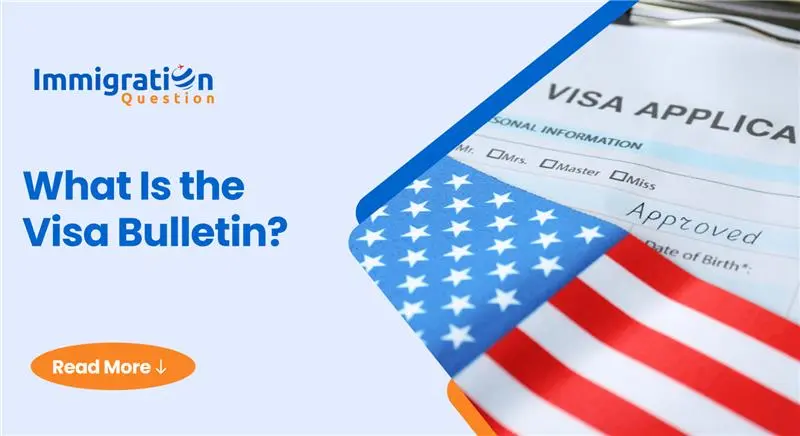If you’re applying for a green card through family or employment sponsorship, you’ve probably come across the term Visa Bulletin—but what exactly is it, and why does it matter to your immigration journey?
In this comprehensive guide, we’ll break down what the Visa Bulletin is, how it works, why it’s important, and how it helps answer one of the most common immigration questions for thousands of people waiting to immigrate to the United States.
Understanding the Visa Bulletin
The Visa Bulletin is a monthly publication issued by the U.S. Department of State. It provides up-to-date information on the availability of immigrant visas (also known as green cards) in various family-based and employment-based categories. These updates are essential for anyone waiting to move forward with their immigration application.
Because the U.S. government places annual limits on the number of green cards issued in each category and by country, the demand often exceeds the supply. The Visa Bulletin is used to manage this queue by helping applicants understand when they can proceed with their applications.
In essence, the Visa Bulletin answers the crucial immigration question: “When can I get my green card?”
Why Does the Visa Bulletin Exist?
The Immigration and Nationality Act (INA) places limits on the number of green cards that can be issued each year. These are broken down into:
- Family-sponsored preferences
- Employment-based preferences
- Per-country caps
Once the demand exceeds the available supply in any category, a waiting list forms. The Visa Bulletin serves as a monthly update that lets you know where you are in that line.
For example, if your sibling (a U.S. citizen) filed a petition for you in 2015, you may have to wait several years before your turn comes up. The Visa Bulletin tells you if your wait is over—or how much longer you’ll have to wait.
Key Terms to Know in the Visa Bulletin
Before diving deeper, it helps to understand a few essential terms that frequently appear in the Visa:
- Priority Date: This is the date when your immigrant petition (Form I-130 or I-140) was received by USCIS. Think of it as your place in line.
- Final Action Date: This is the date when a visa number is available, and USCIS can issue you a green card. Your priority date must be earlier than this date.
- Date for Filing: This date lets you know when you can submit your application for adjustment of status (Form I-485), even if a visa isn’t yet available.
Understanding these terms is critical for following your case in the Visa Bulletin and for addressing key immigration questions throughout the process.
How to Read the Visa Bulletin
The Visa Bulletin is divided into two major categories:
- Family-Sponsored Preferences: These include categories like spouses of permanent residents, unmarried children of U.S. citizens, siblings of U.S. citizens, and more.
- Employment-Based Preferences: These cover employment-based visa categories like EB-1, EB-2, EB-3, and special workers like religious workers or investors.
Each chart is further divided by country. Certain countries—such as India, China, Mexico, and the Philippines—have longer wait times due to high demand.
To interpret the bulletin for your case:
- Identify your preference category.
- Check your priority date.
- Compare your date to the chart in the bulletin for your country.
If your priority date is earlier than the “Final Action Date,” you can proceed with your green card application.
Why the Visa Bulletin Changes Monthly
The State Department updates the Visa Bulletin every month based on:
- Global visa demand
- Changes in USCIS processing
- Unused visa numbers from other categories
Sometimes dates move forward quickly, while in other months they remain stagnant or even move backward (a situation known as retrogression). These shifts are frustrating, but they reflect the balancing act the government must perform to distribute visas fairly.
Real-Life Example of Visa Bulletin Use
Let’s say Maria, a U.S. green card holder, files an I-130 for her husband in January 2022. Her husband lives abroad and falls under the F2A family-sponsored category (spouses and minor children of green card holders).
Each month, they check the Visa Bulletin to see if the Final Action Date has reached January 2022. When it finally does, Maria’s husband can either proceed with consular processing or adjust status (if already in the U.S.).
Without the Visa Bulletin, they wouldn’t know when it’s time to move forward.
What to Do If You’re Waiting
If your priority date hasn’t become current yet, here are proactive steps to take:
- Track the Bulletin: Set a reminder to check the official Visa Bulletin every month.
- Prepare Your Documents: Make sure your civil documents, medical exams, and financial support forms are ready.
- Consult an Immigration Question Attorney: A knowledgeable lawyer can help you understand what the bulletin means for your case and plan your next steps.
Common Immigration Questions About the Visa
Q: Can the priority dates move backward?
A: Yes. Retrogression can occur when there’s a surge in demand or unused visas from prior months are carried over. This temporarily lengthens the wait.
Q: Do immediate relatives need to follow the Visa Bulletin?
A: No. Spouses, minor children, and parents of U.S. citizens are considered immediate relatives and don’t have to wait for visa availability.
Q: What happens if I miss the opportunity when my date is current?
A: Timing is critical. If you delay, your priority date could retrogress, delaying your application. Always act quickly with the help of an immigration question lawyer.
Q: How does my country affect my wait time?
A: Countries with high immigration demand—like India, China, Mexico, and the Philippines—have longer waits due to country caps.
How an Immigration Question Lawyer Can Help
Understanding the Visa Bulletin isn’t always straightforward. An Immigration Question attorney can:
- Help you calculate your priority date and track it accurately
- Explain how each month’s changes affect your application
- Prepare and submit your green card paperwork when your date becomes current
- Identify alternative paths to legal status if your category faces long delays
Having a lawyer answer your specific immigration questions can save you time, stress, and costly mistakes.
Final Thoughts: Stay Informed and Stay Ready
The Visa Bulletin is one of the most important tools in the immigration process. It helps you know when you’re eligible for a green card and how long you might have to wait. But understanding it fully requires close attention and sometimes legal guidance.
If you have questions about the Visa Bulletin, green card wait times, or your immigration options, contact an Immigration Question lawyer today. Visit ImmigrationQuestion.com to schedule a consultation and get answers to your most pressing immigration questions.









